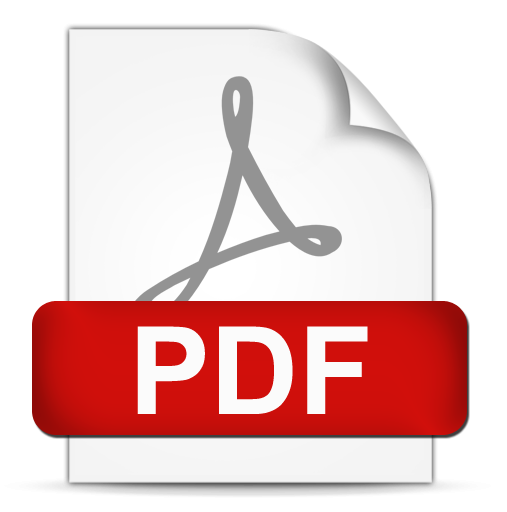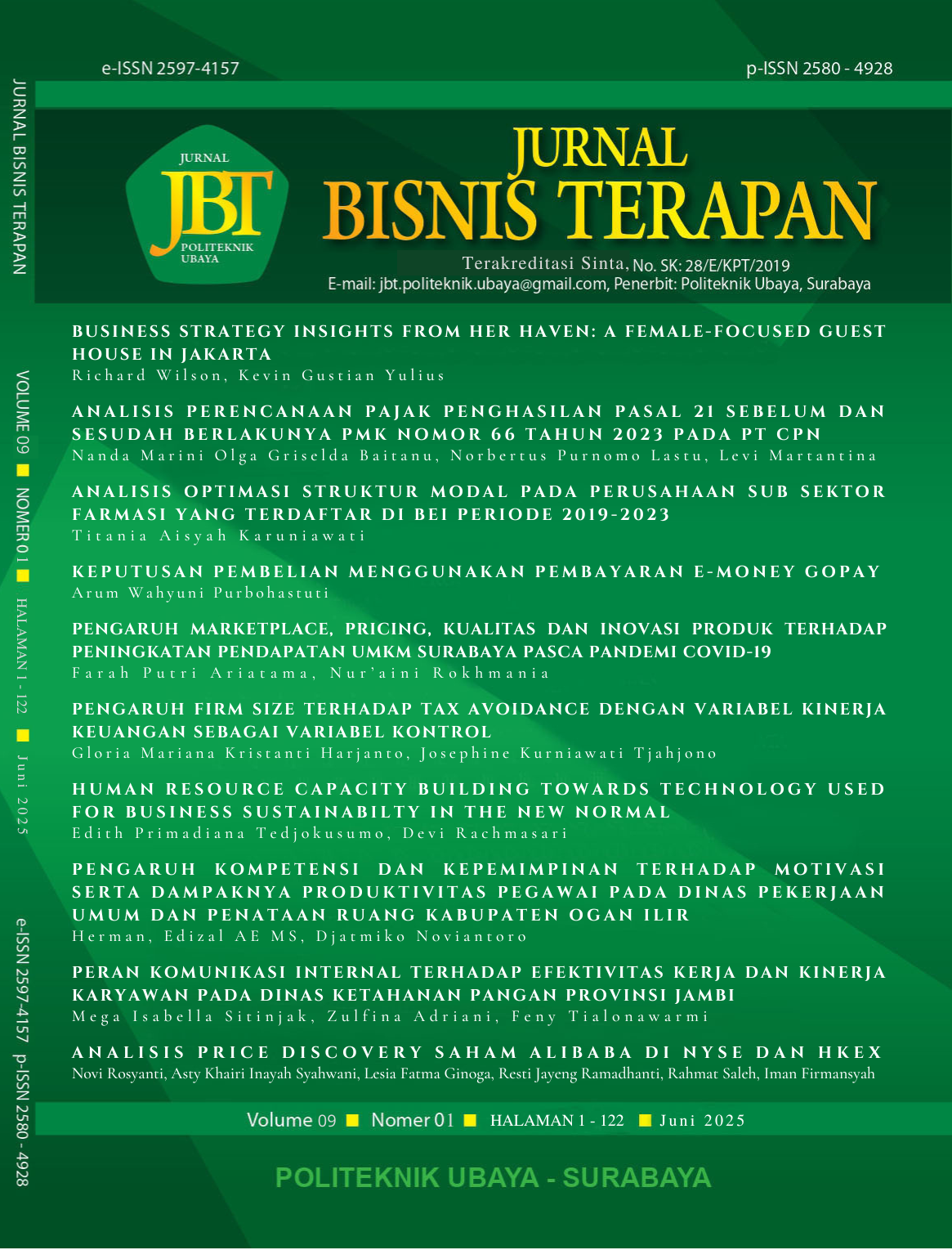HUMAN RESOURCE CAPACITY BUILDING TOWARDS TECHNOLOGY USED FOR BUSINESS SUSTAINABILTY IN THE NEW NORMAL
 Abstract Views:
21 times
Abstract Views:
21 times
 PDF Downloads:
10 times
PDF Downloads:
10 times
Abstract
There are many changes in the business organizations’ perspective and the way of doing the job to achieve the goals of business organization after the Covid-19 pandemic. So, this study aims to find out what problems that may occur in business organization. In addition, it is also important to know from the organization side’s regarding the goals achievement by the role of the employees. Whether the employees are still indeed needed or any other things needed to be added to match with the target of business organization. Another thing that should also be put into consideration is the usage of technology after the pandemic - that could be the only solutions for business organization. The method used here was descriptive qualitative, and the data were taken by the questionnaire and some interviews in a specific manufacture national company in East Java. The result of findings showed the following. After the pandemic, it can be concludes as the usage of technology and applications are beneficial, even though there is some refusal from the employees, but with the assistance and training, the problem is solved; in addition, the production process can run smoothly and the goal of the production can be achieved.
Downloads
References
Arief, A. S., Mulyadi, M., & Liriwati, F. Y. 2021. The Sustainable Business Strategy During The New Normal Era: Lesson for Indonesian Academic. International Research Journal of Management, IT and Social Sciences, 8(3), 274- 285. https://doi.org/10.21744/irjmis.v8n3.1667
Epindah, Teguh. L.V., Yuhendri. 2023. Inovasi dan Literasi Keuangan: Faktor Penting untuk Keberlanjutan Usaha. Journal of Student Research (JSR), 1(4). 415-427. https://doi.org/10.55606/jsr.v1i4.1585
Gabbiadini, A., Baldissarri, C., Durante, F., Valtorta, R. R., De Rosa, M., & Gallucci, M. Together Apart: The Mitigating Role of Digital Communication Technologies on Negative Affect During the COVID-19 Outbreak in Italy. Frontiers in Psychology, 11(April), 1–11. https://doi.org/10.3389/fpsyg.2020.554678. (2020)
Haryono, Bambang S., dkk. 2012. Capacity Building. Malang: Universitas Brawijaya Press.
https://indonesiabaik.id/infografis/usia-produktif-dominasi-penduduk-indonesia
Kandiyah, N. & Diwanti, D.P. 2020. Pengaruh Capacity Building terhadap Kinerja Karyawan Perbankan Syariah (Studi Kasus pada Bank Muamalat Daerah). Jurnal Bisnis, Manajemen & Akuntansi, 7(1), 10-30.
Kramer, A., & Kramer, K. Z. 2020. The Potential Impact of the Covid-19 Pandemic on Occupational Status, Work from Home, and Occupational Mobility. Journal of Vocational Behavior, 119(May), 1–4. https://doi.org/10.1016/j.jvb.2020.103442.
Megginson, L. C. 1977. Personnel and Human Resources Administration, Richard D. Irwin Inc. Homewood, Illinois.
Sedarmayanti. 2011. Manajemen Sumber Daya Manusia, Reformasi Birokrasi Manajemen Pegawai Negeri Sipil. Bandung : Rafika Aditama
Soedarjadi. 2009. Hak dan Kewajiban Pekerja Pengusaha.Yogyakarta: Pustaka. Yustisia.
Sugiyono, P.D. 2019. Metode Penelitian Kuantitatif, Kualitatif, dan R&D. Sutopo, Bandung: CV. Alfabeta.
Taormina, R. J., & Gao, J. H. Maslow and the motivation hierarchy: Measuring Satisfaction of the needs. American Journal of Psychology, 126(2), 155–177. https://doi.org/10.5406/amerjpsyc.126.2.0155. (2013)


This work is licensed under a Creative Commons Attribution-NonCommercial-ShareAlike 4.0 International License.

Ciptaan disebarluaskan di bawah Lisensi Creative Commons Atribusi-NonKomersial-BerbagiSerupa 4.0 Internasional.
-
Articles published in Jurnal Bisnis Terapan are licensed under a Creative Commons Attribution-NonCommercial-ShareAlike 4.0 International (CC BY-NC-SA 4.0) license, which permits anyone to copy, transform, or redistribute articles for any lawful purpose in any medium, provided appropriate credit is given to the original author(s) and Jurnal Bisnis Terapan is recognized as its original publisher. A link to this license should also be provided. Any derivative work of an article published in Jurnal Bisnis Terapan must also be shared under the same (or compatible) license.
-
Both copyright and publishing rights on articles are retained by the respective author(s), without restrictions. Only a non-exclusive license is granted to Jurnal Bisnis Terapan to publish the article and identify itself as its original publisher.

 DOI:
DOI:






